Saffron mushrooms, types, pictures and descriptions, recipes for preparing for the winter
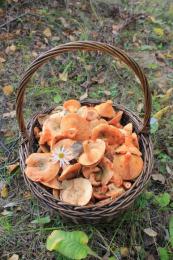
Ryzhiki are considered the most popular and tasty among their fellows and this is not at all surprising, they really have excellent taste, they can be eaten both fried and salted.
In the pictures, saffron mushrooms look simply charming; they attract the eye with the amazing shades of their color, emphasized by the bright greenery of the surrounding plants. The fact is that mushroom hunters collect the first harvest not in the fall, but in July.
Content:
- Camelina mushrooms: pictures and description of the plant
- Types of saffron mushrooms, where they grow, in which forests
- How to cook saffron mushrooms
- How to distinguish real saffron milk caps from false ones
Camelina mushrooms: pictures and description of the plant
By the general name, biologists mean representatives of the genus Milky. Among the characteristics that unite the species are the color of the fruiting body: from yellowish-pink to orange-red, as well as the secretion of juice, also colored in orange shades.
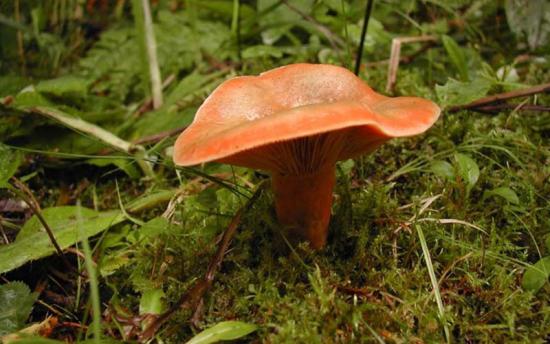
The taste of this product is appreciated all over the world; in some European countries it is classified as a delicacy.
Considering mushrooms saffron milk caps in the pictures, you can clearly see a bright orange tint, the mushroom body gets this color due to the high concentration of beta-carotene in it - a substance that, when it enters the digestive system, turns into vitamin A, which is extremely useful for humans.
In addition, the product is a source of B vitamins:
- niacin
- thiamine
- riboflavin
The usefulness of the Milkies does not end there; they contain:
- ash components and fiber
- water and saccharides
- mineral salts of magnesium, iron, potassium, phosphorus and calcium

Of course, all these substances are necessary for the body; they affect the condition of the skin, nails and hair. And also, due to the presence of the natural antibiotic lactrioviolin, Milklarks can suppress the development of many types of microorganisms. They are recommended to be taken in the treatment of inflammation of bacterial origin and even tuberculosis.
More than 4% of the mushroom body consists of easily digestible amino acids; this variety is compared to meat in terms of the amount of protein and is considered the best source of protein.
The energy value of the product is higher than that of herring, eggs and beef. Due to its valuable properties, this type of Milk is recommended for those who are on a diet, vegetarians and people who fast.
Before you go picking saffron milk mushrooms, it is recommended to carefully study the description and pictures where they are depicted. The inexperience of mushroom pickers sometimes leads to the fact that they collect a conditionally edible pink mushroom instead of a valuable mushroom.
The main differences by which you can accurately identify a wave must be remembered:
- its milky juice is colorless and does not have a pink-orange tint
- the surface of the cap has an edge
We invite you to watch an interesting video about silent hunting:
Types of saffron milk caps, where they grow, in which forests
Among the most common types we name the following:
- Real
- Red
- Spruce
- Pine red
- Fir, or Japanese
- Alpine or Salmon
The most original representative of the species is Lactarius indigo, growing in Asia and America, the color of its body and milky juice is blue, indigo, it is quite edible.
Even by the names, it’s easy to guess in which forests saffron milk caps grow. Judging by their bright color, we can definitely say that they prefer well-lit clearings.
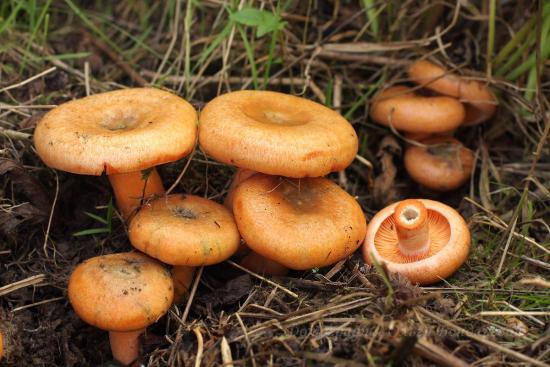
The spruce saffron milk cap is quite large, the cap reaches 5-8 cm in diameter. The habitat is mixed and coniferous forests; under the spruce trees you can find huge families of this species of Milk. Fruits from July to September.
The Red cap is quite fleshy, about 10-12 cm in diameter. The mushroom tends to form an association with pine; its favorite place is dry pine forests. The milky red appearance differs from the red one in the paler color of the cap and its smaller size. It also chooses dry pine forest as its habitat and bears fruit in July-September.
How to cook saffron mushrooms
All of the above varieties are edible and have excellent taste. As a rule, saffron milk caps are not dried; they are prepared for the winter by pickling and salting.
Commenting on the cooking process, real chefs note that mushrooms of this type do not need to be washed before processing; they are simply thoroughly wiped to remove dust and forest debris.
Connoisseurs usually preserve saffron milk caps in a spicy marinade, or salt them in tubs. Stunningly delicious sauces are also prepared from this mushroom.
Let us share with you one simple but tasty recipe for preparing saffron milk caps for the winter. It was taken from an old cookbook.
To prepare 1 kg of product you will need to stock up on:
- 2 tablespoons coarse salt
- 2 spoons of sugar
- a spoonful of black peppercorns
- a couple of sprigs of dill
- five currant leaves
- a couple of laurel leaves
- 2 horseradish sheets
- 1 liter of water
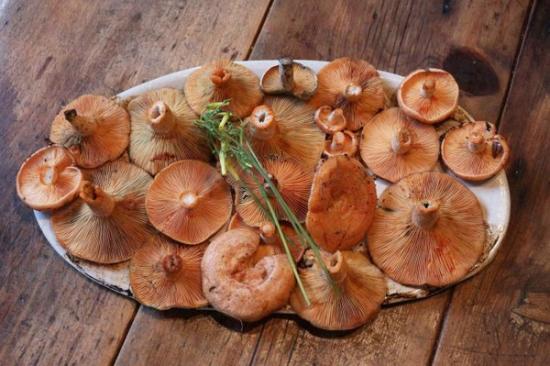
The bottom of the mushroom stem will need to be cut off; if wormholes are found, remove them. Pour the selected product into a basin, add salt water, leave for 5 minutes and rinse.Then dip the mushrooms in clean water.
The peeled mushrooms are thrown into a pan of boiling water for 15 minutes, then the water is drained, and the mushrooms are washed well under running water.
Mushrooms are poured into clean, sterilized half-liter jars, in such quantities that they are at the level of the hanger of the vessel. To make the brine, you need to boil water, add measured salt and sugar to it, add dill and pepper, and bay leaf.
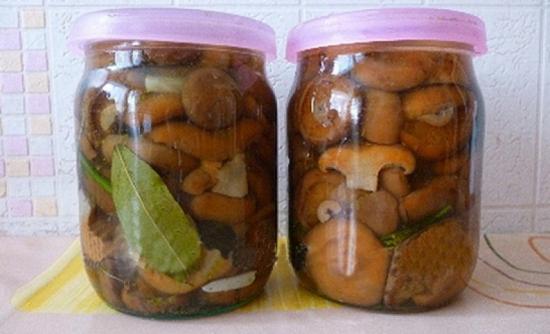
After boiling, add horseradish and currant leaves. Let it simmer for 30 seconds and pour into the jars. Keep the jars in the kitchen until they cool, then close them with tight lids and put them in the refrigerator.
Useful tips for pickling mushrooms, watch the video:
How to distinguish real saffron milk caps from false ones
The most popular are spruce and pine. But due to inexperience, these species can easily be confused with the pink trumpet, which is conditionally edible. Although if you look closely, there are quite significant differences.
In particular:
- the fracture of the cap of the camelina is orange; when exposed to air, it acquires a greenish tint.
- The flesh of the mushroom is dense; it retains its original color and density well.
- It is not recommended to wash them before salting; they are simply thoroughly cleaned of debris.
- The salted product acquires a bluish-greenish tint, sometimes brown.
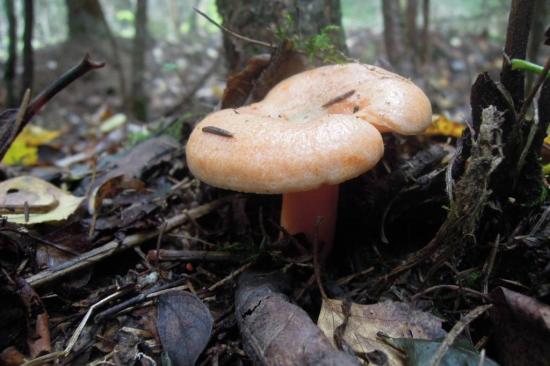
The main difference: when the saffron milk cap is broken, a colorless milky juice is released; when the saffron milk cap is damaged, it is colored from pink-orange to reddish.
False mushrooms are very similar to real ones; they grow in mixed and coniferous forests; there is no point in being especially afraid of such mushrooms, they are edible, have good taste and are suitable for pickling.
Saffron milk caps have been highly valued since ancient times.In the Urals, for example, they were collected in tons, salted in cedar barrels, right in the forest. Salted in bottles, they were exported to France. Bottle mushrooms cost more than the same container of quality champagne. Specimens of the Mlechnikov, whose cap diameter was an inch, were especially highly prized.
The benefits and harms of saffron milk caps, like any other mushrooms, are determined by compliance with the technology of their preparation and moderate consumption as a food product. When collecting, we should not forget that inedible specimens, as well as anything whose quality there is the slightest doubt, should not end up in the basket.
You will learn even more useful information about saffron milk caps by watching the video:

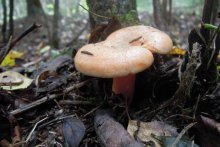
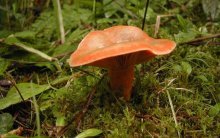
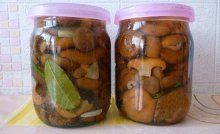

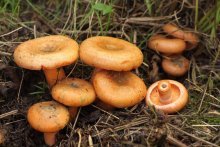
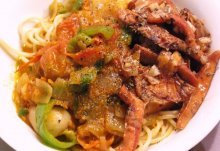
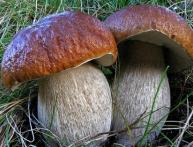
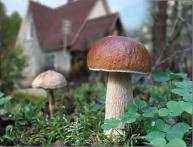
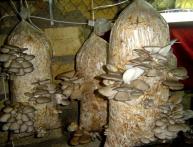
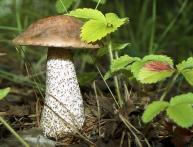
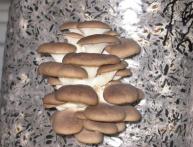
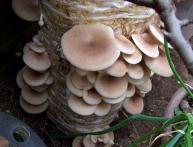
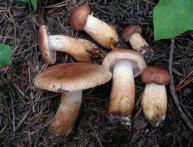
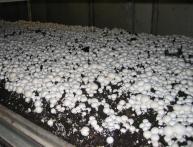
Comments
I prefer to use fried or pickled mushrooms. Therefore, I prefer other types of mushrooms to saffron milk caps. On the other hand, saffron milk caps can also be very tasty if you can pickle them sharply enough.
If you have access to saffron milk caps, but have never fried them, correct this urgently. This is an incredibly tasty mushroom in any form. In the city you won’t find saffron milk caps during the day, but in our village in the fall the main weekend dish was fried saffron milk caps breaded in flour and spices with sour cream. It almost tastes like veal chop.
I don't agree at all. Rizhik is a very tasty mushroom, both pickled (not only spicy), and in marinade, and simply fried with onions and eggs. Even after a long heat treatment, they do not become soft and shapeless; they are pleasant and tasty to eat. It's probably a matter of taste.
We love saffron milk caps fried with onions and potatoes.These mushrooms remind me of meat in some way, they are very tasty and filling) And they also make an excellent mushroom soup, with dill and sour cream - absolutely a fairy tale!